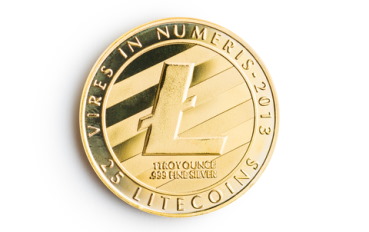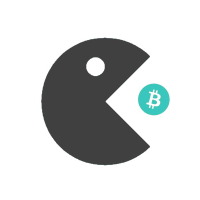Litecoin

What Is Litecoin?
Litecoin sits in second spot in the pure cryptocurrency category. It was designed as a fast, secure and low-cost payment method. Like Bitcoin, it uses blockchain technology to ensure that Litecoins aren’t double spent.
This cryptocurrency is based on the Bitcoin (BTC) protocol (for more info, head to our ‘What is Bitcoin?‘ page), but it is significantly quicker than the first cryptocurrency: the block time is only 2.5 minutes and transaction fees are low. These are 2 areas where Bitcoin getd a lot of criticism. Litecoin, as its name suggests, is perfect for low value transactions. To all intents and purposes it is a fork of Bitcoin.
Silver versus Gold
Litecoin went live in October 2011 and is widely accepted by merchants worldwide and has cemented its position in the top ten cryptocurrencies chart by market cap. It has been long seen as the silver of the cryptocurrency world against the gold of Bitcoin. It’s much closer to Bitcoin than many other cryptocurrencies, such as those you’ll find in DeFi or even XRP.
Whereas Bitcoin uses an algorithm called SHA-256 to validate transactions, Litecoin uses a newer algorithm called Scrypt.
The cryptocurrency was designed and launched by Charlie Lee (also known as “Chocobo”) , a former software engineer at Google who has also worked at Coinbase. He is now the managing director of the Litecoin Foundation—a non-profit org that works alongside the Litecoin Core Development team to help build the Litecoin ecosystem.
Pros
- Litecoin is the #2 pure cryptocurrency token.
- It was designed to be simple, fast and low cost to operate
- It is one of the most widely accepted cryptocurrencies.
- Litecoin transactions typically take minutes, and transaction fees are very low, and this has helped it gain traction in developing countries
- Mining Litecoin is still well within reach of less sophisticated players. Mining Bitcoin, on the other hand, is increasingly out of reach of everyday users unless they team up with others in mining pools.
- Bitcoin has historically been faster to market than Bitcoin with new technologies designed to increase the speed and efficiency of its network.
Cons
- Just like Bitcoin, confirming transactions on the Litecoin network requires considerable computing power.
- Critics accuse Litecoin as being simply a “Me Too”, with not much to differentiate against its more famous cousin apart from a lower market capitalization.
How Many Litecoins are there?
Like Bitcoin, Litecoin is a Proof of Work cryptocurrency. Every time a block is mined, new Litecoins are minted, and like Bitcoin there is a finite total supply.
As of February 2021, just over 66.5 million Litcoins have been mined. The supply of Litecoin is capped at 84 million, a limit that the Litecoin Foundation have said will be exhausted around 2140, over 100 year into the future. Like Bitcoin, the number of LTC mined per block halves every four years.
When the cryptocurrency launched, 500,000 LTC were minted to begin with. Charlie Lee was no doubt one of the early miners. Other than that, the Litecoin team does not receive any direct reward from Litecoin.
Security
Like Bitcoin, Litecoin is very secure thanks to its underlying blockchain technology. The cryptocurrency uses a Proof of Work (PoW) algorithm to make sure that transactions are checked quickly across a distributed network and that records are error free.
On Litecoin, new blocks are added to the blockchain every two and a half minutes or so. Bitcoin adds a block every 10 minutes.
